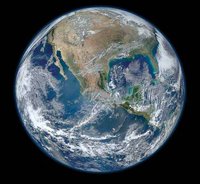
The Earth is more than a one Earth-mass, one Earth-radius, one Earth-density planet. It is the only known terrestrial planet to undergo plate tectonics, have continental crust and a strong geodynamo. Whether aiding in regulating surface climate or shielding the planet from stellar winds, each of these unique aspects of the Earth are, in part, geophysical consequences of its geochemical composition. By mole, 95% of the Earth’s composition is comprised of only four elements: Mg, Si, Fe, and O. These elements are the major terrestrial-planet-building elements, the relative proportions of which govern a planet’s dominant mantle mineralogy, determine the relative core size, and primarily control on a planet’s mass and radius for those without large volatile envelopes. The remaining minor elements (e.g. Ca, Al, and Na) control crustal composition and weathering, melting and degassing relations, and may even play a role in tectonics. Mass-radius models, however, are extremely insensitive to the abundances of the important minor elements. As we search for habitable worlds, mass-radius models will provide only a coarse picture of a terrestrial planet’s interior and surface. This means we must move
beyond a description of planets as “Earth-like” based on bulk density alone and instead quantify a planet’s likelihood to be of a composition.
 Getting Under Europa’s Skin
Getting Under Europa’s Skin Tracing Formation and Evolution of Outer Solar System Bodies Through Stable Isotopes and Noble Gas Abundances
Tracing Formation and Evolution of Outer Solar System Bodies Through Stable Isotopes and Noble Gas Abundances Photosynthesis, a Planetary Revolution
Photosynthesis, a Planetary Revolution Xenon: King of the Gases
Xenon: King of the Gases